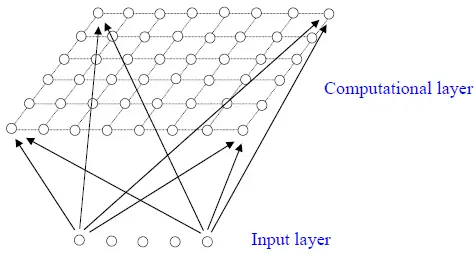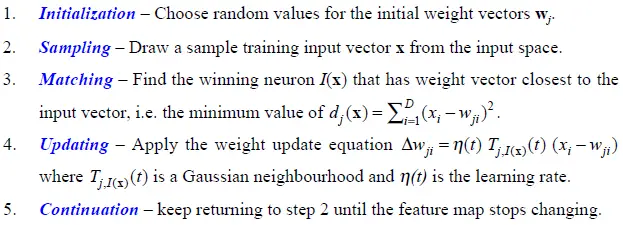Self Organizing Maps (SOM) technique was developed in 1982 by a professor, Tuevo Kohonen. Professor Kohonen worked on auto-associative memory during the 1970s and 1980s and in 1982 he presented his self-organizing map algorithm.
SOMs are named as “Self-Organizing” because no supervision is required. Self-organizing maps learn on their own through unsupervised competitive learning. They attempt to map their weights to conform to the given input data.
Definition of Self-organizing maps
Thus Self-organizing maps are neural networks that employ unsupervised learning methods, mapping their weights to conform to the given input data with a goal of representing multidimensional data in an easier and understandable form for the human eye.
The main goal of Kohonen’s self-organizing algorithm used to transform input patterns of arbitrary dimensions into a two-dimensional feature map with topological ordering. During training, each pattern of the data set in prayer is presented to the network, one at a time, in random order. As the spatial ordering progresses during the initial phase of training, each pattern gives rise to a localized reason of activity in the feature map against a background of lower activity. Eventually, once the feature map has been trained, the presentation of an input pattern should cause a localized group of units to be active.
Architecture of a Self Organizing Map
SOM has a feed-forward structure with a single computational layer of neurons arranged in rows and columns. Each neuron is fully connected to all the source units in the input layer. A one-dimensional map will just have a single row or column in the computational layer.

Kohonen self-organizing maps result from the energy of four basic processes
- Initialization
- Competition
- Cooperation
- Adaptation

Self Organizing Map Algorithm
The aim is to learn a feature map from the spatially continuous input space, in which our input vectors live, to the low dimensional spatially discrete output space, which is formed by arranging the computational neurons into a grid.
The stages of the SOM algorithm that achieves this can be summarized as follows:

Advantages
- Data mapping is easily interpreted
- Capable of organizing large, complex data sets
Disadvantages
- Difficult to determine what input weights to use
- Mapping can result in divided clusters
- Requires that nearby points behave similarly
Applications
- WEBSOM: Organization of a Massive Document Collection
- Phonetic Typewriter
- Classifying World Poverty
